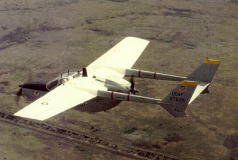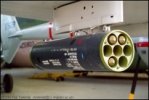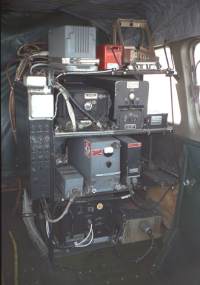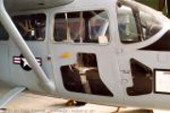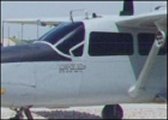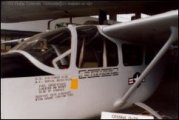
Home
FACs
More About FACs
The AO
A Shau Valley
• A Shau SF Camp
Hué
• Hué Cit Airfield
• MACV Compound
• LCU Ramp
• Hué Goose
Battle of Hué (Tet 1968)
• Trail FACs
The Missions
Visual Recon
• Sunken Sampan
Close Air Support
• CAS Munitions
• Rules of Engagement
• TACS
• Battle at Hua Cu
Interdiction
• McNamara Line
• Choke Points
Ranch Hand
Trail Dust Mission
Arc Light
SAR
Hammer 51 Rescue
Search for Jolly 23
• Msn Reports
• Search Area Map
• Search Rejoined
• Link to Past
Jungle Penetrator
Legacies
Aircraft
O-2A
Glossary
Resources
Contact


Tom Pilsch with O-2A, 67-21309, at the Hue Citadel Airfield, August, 1968 Click here to learn the post-war history of 67-21309 |
|
The O-2 Skymaster was a military version of the Cessna 337 Super Skymaster 4-6 passenger general aviation aircraft. It was purchased by the U.S. Air Force beginning in 1967 in two versions. The O-2A was used in the forward air control mission. It was equipped with additional radios and ordnance hard points under the wings for rocket and machine gun pods. The O-2B was the 337 civilian version modified to carry a large loud speaker on the right side of the fuselage and a leaflet chute in the belly for psychological warfare operations. The unique fore and aft engine layout and twin tail booms gave the O-2 a distinctive appearance.
Two engines provided a definite advantage over the single engine O-1, but at heavy operating weights and high temperature conditions, O-2 performance with an engine out could be a dicey proposition (but still better than engine-out performance in the O-1!). Because of the aerodynamics of a pusher propeller, the O-2 performed better on the rear engine alone than on the front one. (More information on single engine characteristics can be found in the O-2A pilot's manual, the Dash One.) The most significant modification of the civilian Model 337 to the O-2A was the addition of armament.
An armament control panel and a gun sight were added to the instrument panel to complete the offensive armament suite. I never had much success with the gun sight. Like most FACs, I learned that a grease pencil mark on the windshield was just as accurate for aiming a WP marking rocket. Another change from the civilian model was the additional of an enhanced communications and navigation suite on the O-2A.
The navigation suite consisted of TACAN, VOR and low frequency ADF sets. All this plus a transponder and other black boxes whose function I did not know were mounted on a rack occupying a large portion of the passenger compartment behind the pilot. The accompanying photo shows the bulk of this Mil-spec equipment. It also was heavy which contributed to the less than stellar performance of the O-2A.
The small size of the pilot's side window on the original (1967-68 models) made it difficult to keep fighters in sight while working a target in the preferred left turn. Later versions of the O-2 (1969 and subsequent) featured an enlarged window on the left side to improve visibility above and in a turn, but it still did not open.
|
